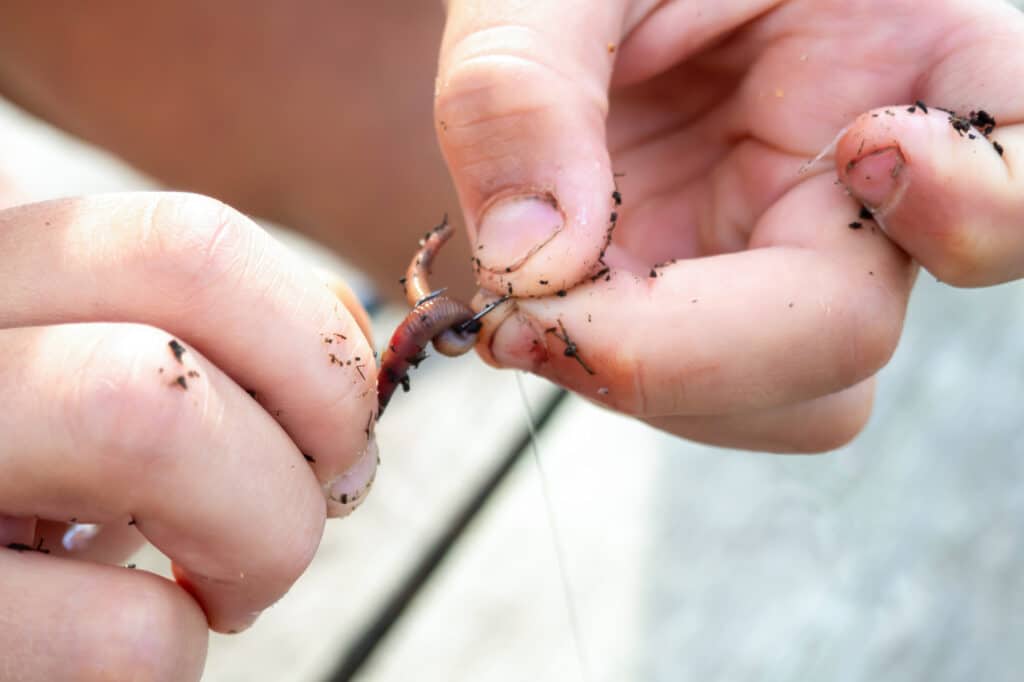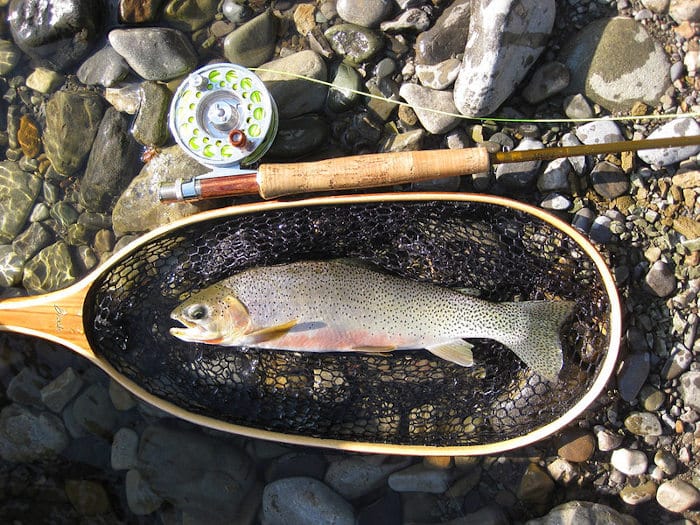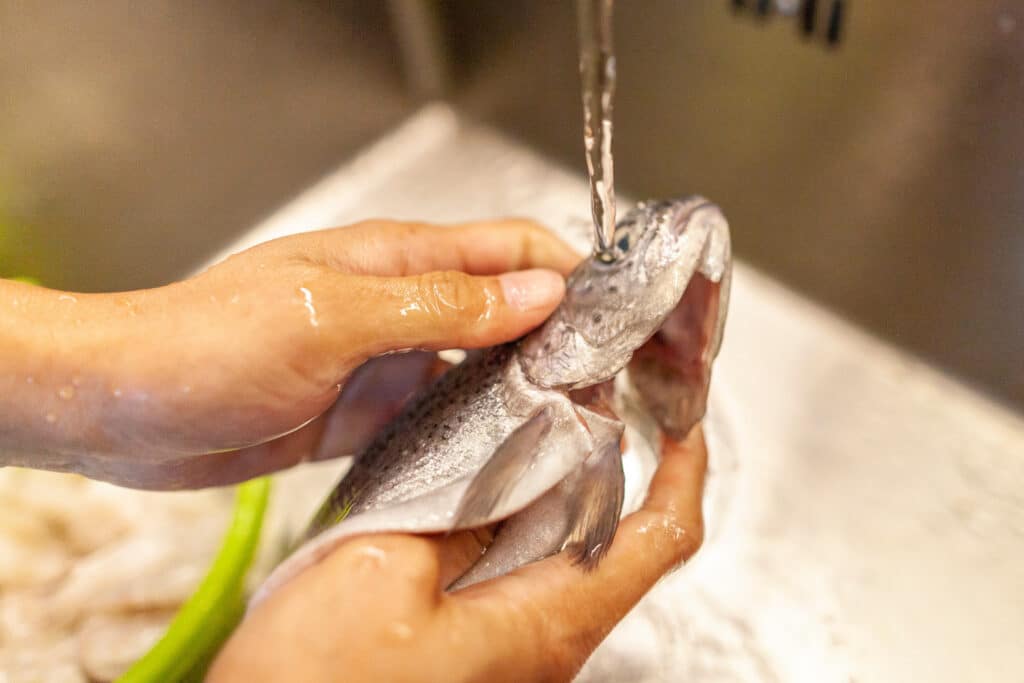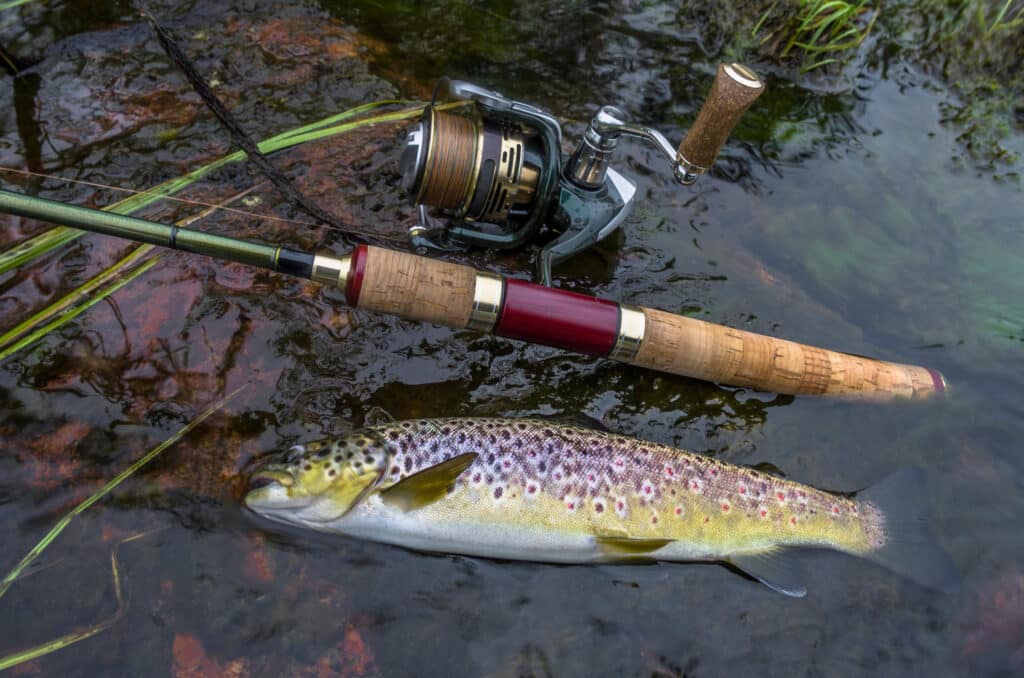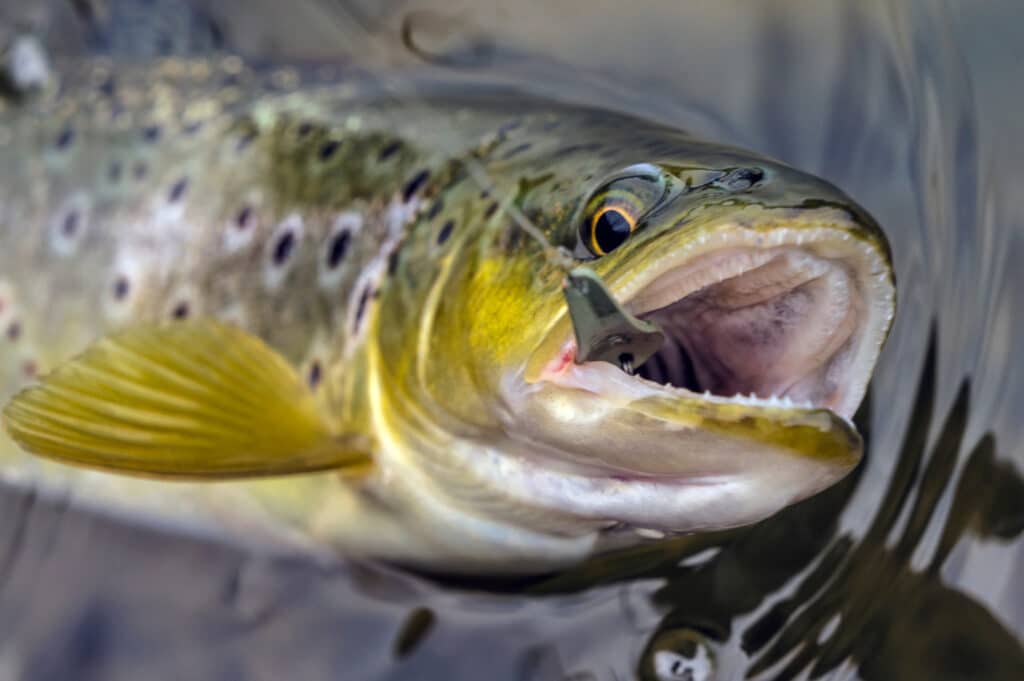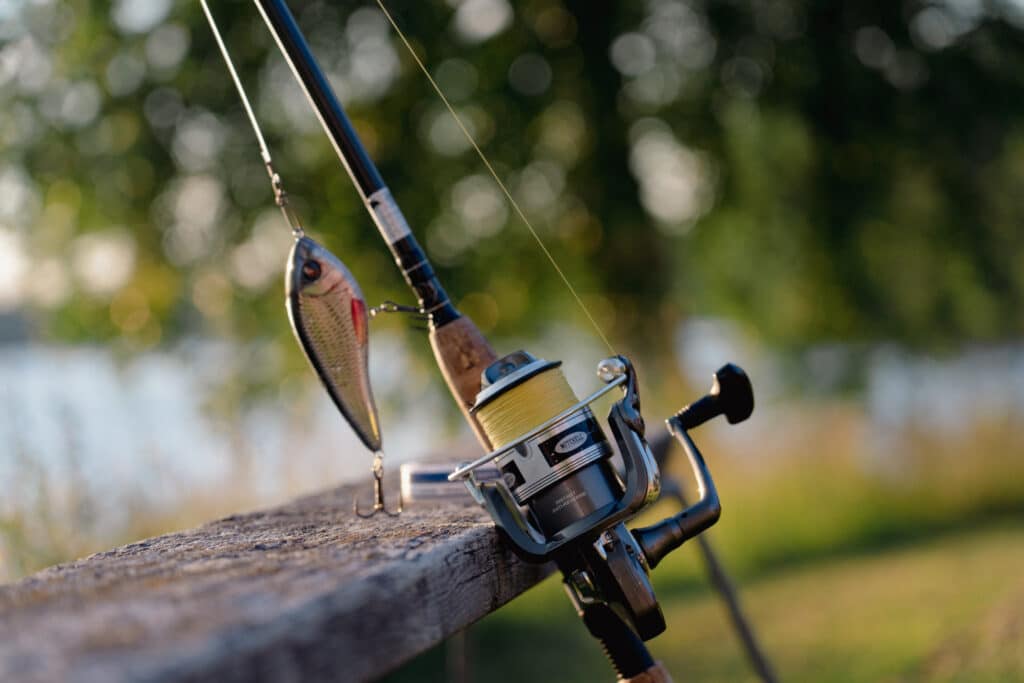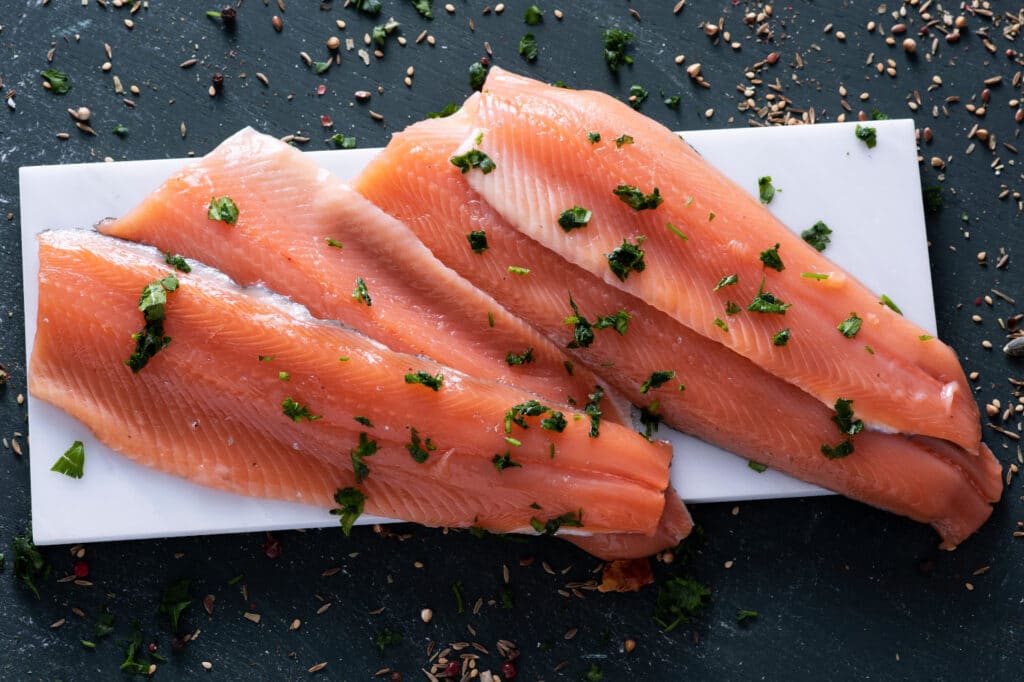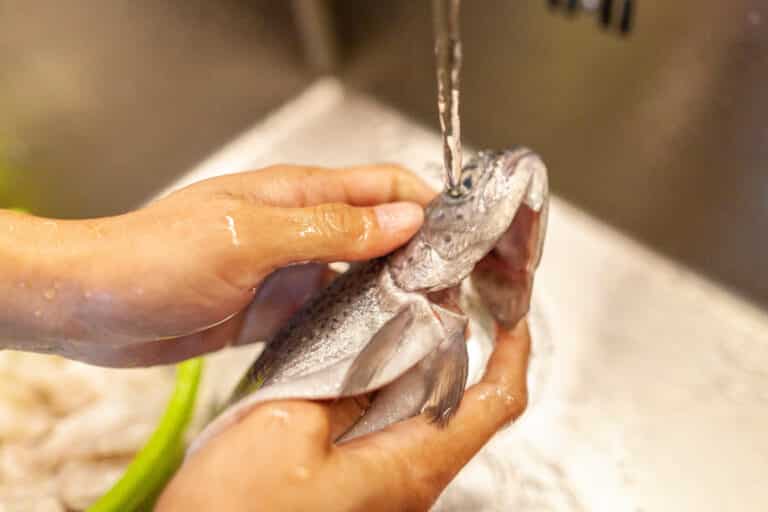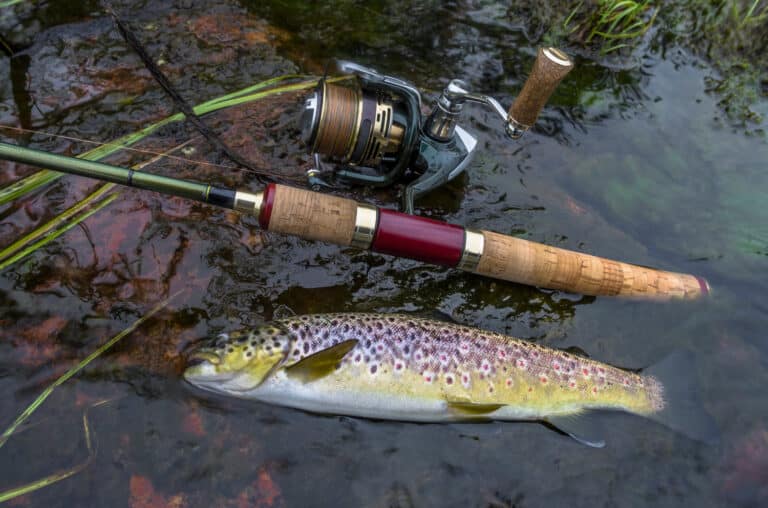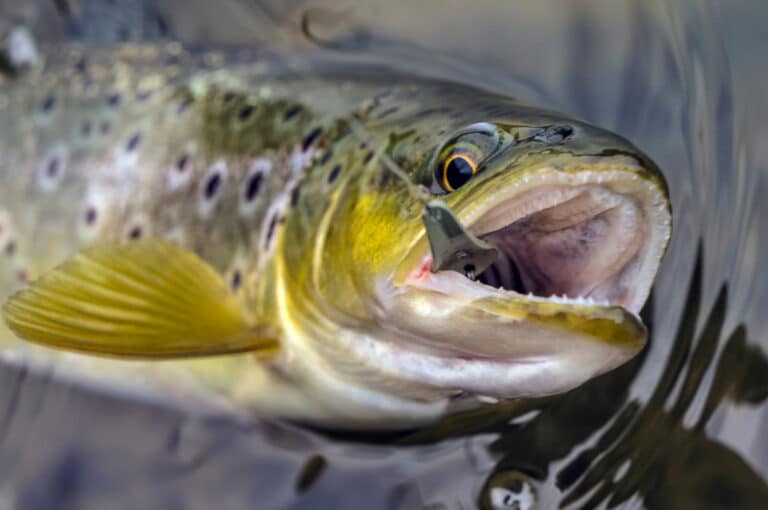Trying to pick the best bait for trout is like picking the “best” dessert; apple pie might be your pick at thanksgiving, but an ice-cream sundae would be better at a summertime barbecue.
The point is that there are tons of great trout baits for different species, situations, and even fishing styles. But although some baits work better than others at different times, the best trout baits (like the best desserts) are always a good choice, no matter where, when, or how you fish them.
In this post, I’ve put together the best trout baits for any time, place, or species (though I am focusing on wild trout in rivers; stocked trout will love these baits, too). Read on for the breakdown and tips on how to use them for the best chance of success.
The Wild Provides is a participant in the Amazon Affiliate program. If you click through one of the links on this site and make a purchase, we may receive a small commission at no extra cost to you. It helps to keep us up and running, but all recommendations are my own honest opinions.
What Makes A Good Trout Bait?
First things first: what is “bait,” and what makes it the best?
Bait is a little bit of a slippery definition in the angling world. In the simplest terms, bait is something that is attractive on its own, either because it is or was alive (i.e. worms), or because it has an attractive scent that mimics food (i.e. Powerbait).
Many anglers (bass anglers especially) use the term “bait” to apply to almost anything, including soft plastics, billed lures, or really anything that mimics fish food. But for the purposes of trout fishing, I’m sticking with the old-school definition: bait is either natural fish food or artificial bait designed to look and smell exactly like it.
If you want more info on the best trout lures, or the best trout spoons, check out my articles on them.
Overall Best Trout Bait: The Humble Worm
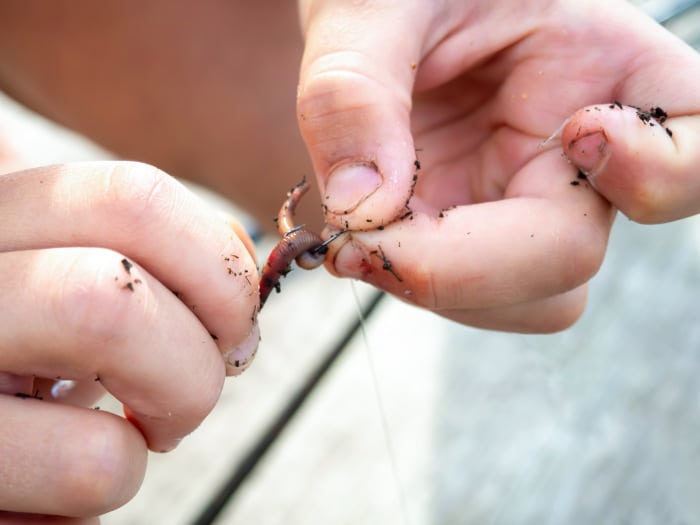
There’s a reason that the most iconic trout bait is a simple worm: because it just flat-out catches fish.
Worms are the best trout bait for a few important reasons. The first is that wild trout eat aquatic insects more than anything else, and live worms look very similar to the wriggling grubs that trout are so accustomed to seeing.
The second is simply size. Trout are opportunistic feeders and will look for the food source that provides the biggest bang for the bite. As long as it looks legit, trout are inclined to pick a big chunk of worm over a mayfly larva because it’s easier to see in fast moving water.
And the third is the scent. It isn’t so much that a worm is a great attractor, but the dirt and oil on a live worm are great at masking human scent. It’s hard to say whether the actual scent of a worm is particularly attractive to trout, but I’d be willing to bet that it is.
Live Worms For Trout Bait
For most trout in most of the situations I fish, I prefer live worms over artificial ones. As long as they’re rigged right, their live wiggling action is hard to beat.
But there are different types of live worms, and the one I use depends on the situation.
In streams with brown trout or big rainbows, big chunks of nightcrawlers (also called dew worms) are the way to go. When I say big, though, I don’t mean use the whole 10-inch worm. Cutting it down to around 4 inches still provides enough food to attract big fish, but isn’t so big that it becomes intimidating.
In smaller brook trout or cutthroat trout creeks, little red wigglers or small chunks of nightcrawler are usually better. Red wigglers are harder to find than earthworms, but most sporting goods stores should have a selection of these thinner, shorter worms. They are typically more lively than nightcrawlers, which is a nice bonus.
In really small streams, I might even drift a couple of mealworms that just barely cover a size 10 hook. Mealworms are actually insect larvae, so it’s debatable whether they belong in the “worm” category, but they are the smallest option that still looks like a worm.
Plastic Worms As Trout Bait
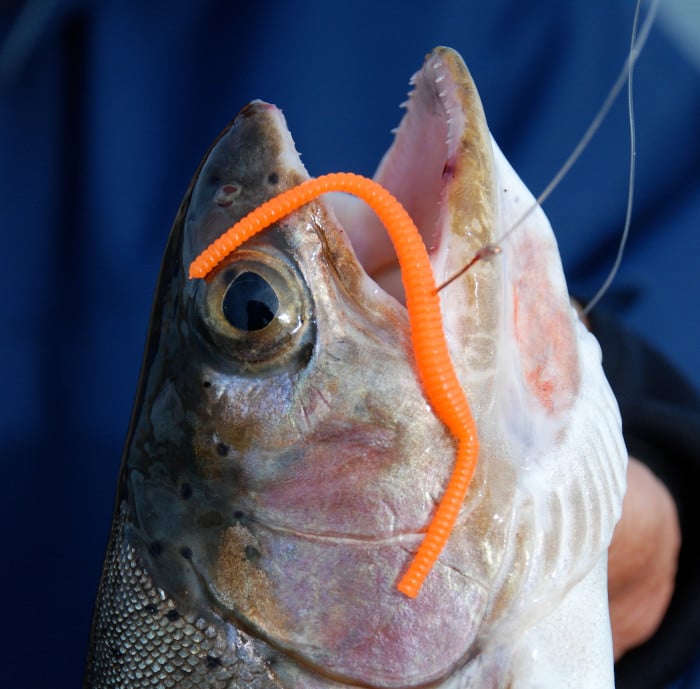
Then there are plastic worms, and the options here are nearly limitless.
There are plenty of worms that are just designed to imitate live ones, both in scent and color. These stay on the hook better than live worms and still have that real worm scent. So in places where real worms typically work well, these can be easy-to-use alternatives.
A few of my favorites are Berkeley Gulp! Earthworms, Berkeley Honeyworms (which are like large maggots), and Berkeley Gulp! Red Worms. Then there are some small scented colored options, and my favorite by far (for trout and all panfish) are Pautzke’s Fire Worms.
Then there are big senko-style worms. They’re more common as bass bait than trout bait, but in big, fast water, they can be a great alternative to live worms.
The bigger and faster the water, the harder it is to keep a live worm on a hook. The liveliness of a worm also doesn’t matter as much, because the turbulence and speed leave little time for trout to analyze the realism of what’s in front of them. Most bites will be highly reactive, so big artificial worms work well.
They also work well because bright, flashy colors like pink, orange, or even chartreuse can help entice reactive strikes. These colors are best for shallow water and sunny days; on overcast days or deep, cloudy water, dark blues, purples, and greens work better.
I wrote a whole post on fishing with worms that covers everything you need to know about both live and artificial ones, so check that out for a more detailed breakdown.
Bait #2: Trout Or Salmon Eggs
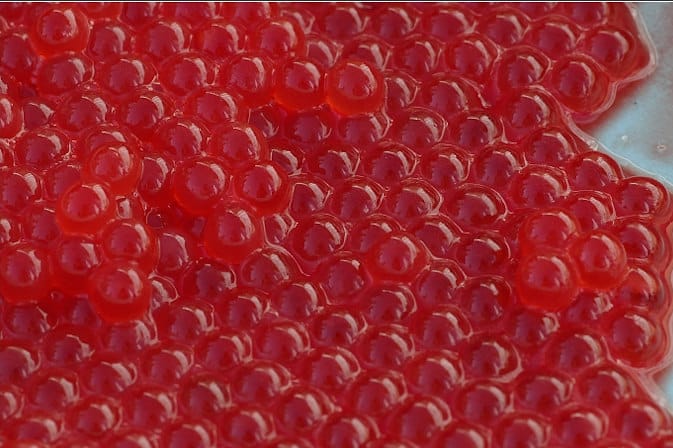
Though they’re more popular as salmon bait than trout bait, fish eggs are undeniably some of the best bait for catching trout.
Like any wild animal or fish, trout love to eat anything that’s easy to grab and packed with nutrients. Trout eggs check both boxes, and during the spawn, eggs become a major food source for trout. You can take advantage of this even outside of spawning season by using real eggs or fake eggs; either one can be killer bait when presented naturally.
In rivers, that means either floating under a bobber just off the bottom, or bottom-bouncing eggs with just enough weight to keep them down. Eggs work great in lakes, too, especially near the mouths of creeks. I find that a Carolina rig works best, but floating under a bobber works well, too.
Live Eggs As Trout Bait
Real, cured salmon or trout eggs typically work better than fake ones, but they’re not nearly as easy to find. In coastal salmon and steelhead towns, you can usually get them at sporting goods stores, and you can order them from Sunrise Baits in the summer. You can also get Pautzke’s Balls O’ Fire, which are natural, cured trout eggs in small bait jars that are ready-made for trout stream fishing..
Another fun option is to harvest them yourself. Wild, native trout should be left alone during the spawn and allowed to reproduce, but when you catch stocked rainbows or any invasive trout for food, check to see if they have eggs. Spawning seasons vary wildly based on region, water body, and elevation, but trout typically spawn in the spring.
If you keep some spawn sac material on you, you can use them fresh from the trout you’re catching to catch even more. Rigging trout eggs is another article’s worth of info, so check out this breakdown for how to do it.
If you catch a bunch of spawning trout and want to save the eggs for later, you can also cure them. The easiest way to do this is to use a commercial cure like Pautzke’s Fire Cure. You can also DIY it with borax, salt, and sugar.
For more info on curing eggs, check out this great article from Midwest Outdoors.
Using Imitation Eggs For Trout Bait
Though there’s nothing quite like the real thing, imitation eggs are still very effective for trout fishing and much easier to work with. They’re less fragile, so you can run them straight onto a hook, or tie them into spawn sacs like regular eggs.
My favorite artificial eggs are Pautzke’s Fire Balls or Mad River Eggs. Both come in a variety of scents, and pretty much any of them will work well. Garlic, anise, and shrimp scents tend to be top performers, though.
Bonus “Eggs”: Trout Beads
Trout beads are all the rage with steelhead fisherman these days, but they’ll work just as well in an Idaho creek as they will in a coastal river. They’re essentially an egg imitation, albeit a large one, that’s “pegged” inline above the hook. Though they usually sit only an inch or two above the hook, they are technically illegal in some places because the trout can be hooked outside the mouth after they bite the bead. Make sure to check your local regs (or call your Fish and Game office; there’s grey area here) before you fish.
Where legal, beads are some of my favorite tactics for trout fishing for any species. I love the BnR soft beads in 12mm or 16mm sizes for most of the trout I fish (you can get a variety pack here). I’ll also add scent (I like Smelly Jelly in Crawfish or Shrimp) to mask my own scent and entice more strikes.
Bait #3: Live Insects
In the wild, trout eat insects more than anything else. The whole concept of fly fishing is based on that fact, but using the real thing is at least as effective, if not more so. Both insect larvae and full-sized live insects can be phenomenal trout bait.
Insect Larvae As Trout Bait
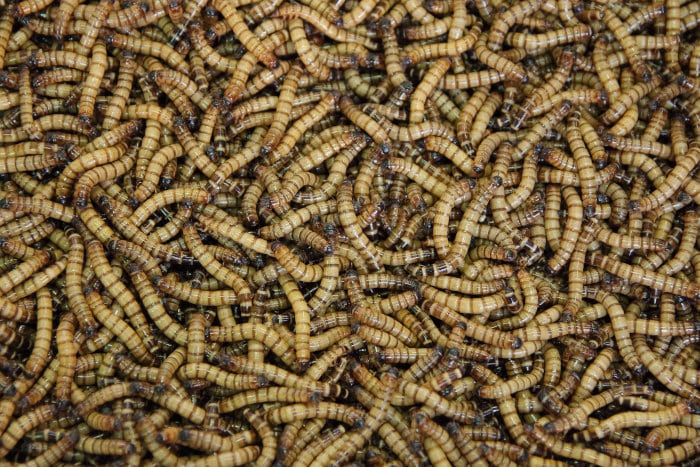
Most of the insects trout eat are aquatic insect larvae (also known as “nymphs”) like mayflies, caddisflies, and stoneflies, and the good news is that you can find these yourself just about anywhere.
When you get to the river, flip over a few rocks at the water’s edge and you’ll almost certainly find a few insect larvae to rig up. The great thing about pulling bait from the river instead of buying it at the store is that you know for absolute certain that the trout in front of you are eating that exact insect. This makes it the most natural trout bait there is, but the small size means you need to have a great presentation to entice the fish.
The easiest way is with a small slip float, a size 12 hook, and just enough split shot to keep it down near the bottom. Hook whichever bugs you find just behind the head and through the carapace, and drift it through different sections of the river. You can also fish big may fly or dragonfly larva on jig heads, letting them sit and flutter on the bottom for a few seconds at a time.
Be ready to reel down and set the hook as soon as that bobber dips down, because trout have a tendency to gulp down insects quickly.
If you don’t want to catch your own, you can buy maggots, mealworms, and sometimes even mayfly larva (called “wigglers”) from local tackle shops.
Adult Insects As Trout Bait
Adult insects are bigger and more lively than larvae, so they can be great for big fish or big water. They’re a little harder to catch yourself, though; if you want to do it effectively, bring a bug net to the river.
Some of the most common insects to use as trout bait are grasshoppers or crickets. They’re tough, hard-shelled insects (unlike adult mayflies), so they stay on the hook and stay lively, too. Fish these the same way as you would larvae. Float them downstream near the bottom for the best chance of catching trout.
If you notice that trout are actively feeding on the surface, you can fish these big insects on the surface using an Adjust-A-Bubble. It’s basically a slip float that you can fill with water, which gives you enough weight to cast but floats when it hits the water. It’s the fly-fishing of spinning gear, and it’s one of my favorite secret weapons for mountain lakes or wide shallow mountain creeks.
Artificial Insects As Trout Bait
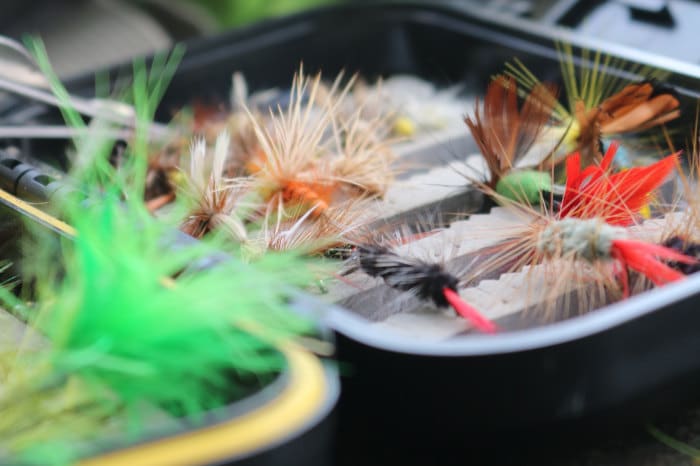
Like any natural bait, there are artificial options that work well, too. It might be a little blasphemous, but you could drift some nymph-pattern flies under a bobber (like Hare’s Ears or Prince Nymphs). You can fish artificial flies with Adjust-A-Bubbles as described above, too. It might get you some sideways glances from fly anglers, but you’ll catch tons of trout nonetheless.
I also really like to use artificial rubber mayfly larvae, like these from Berkeley. They’ve been especially effective on my local brook trout, but they can work well for any species. Black Berkeley Gulp! Hellgramites are another killer artificial insect bait.
Bait #4: Leeches
Leeches aren’t found everywhere, but where they are found they’re a favorite trout food source. That makes them great trout bait, but you’ll need to check if they’re allowed before fishing with them. Regulations vary greatly depending on the state you’re fishing in because live bait like leeches can be harmful to places where they’re not native.
Where they’re native and allowed though, they can be killer. They’re easy grub for hungry trout, and they’re even more lively than worms on a hook. The key is to hook it right through the sucker at the end of the tail so it can still move naturally in the water.
If leeches aren’t allowed in your area, leech pattern flies can be drifted with bobbers. You can also use soft plastics like the Berkley Gulp! Alive! Leech, which are always a solid option to have in your tackle box.
Bait #5: Crayfish
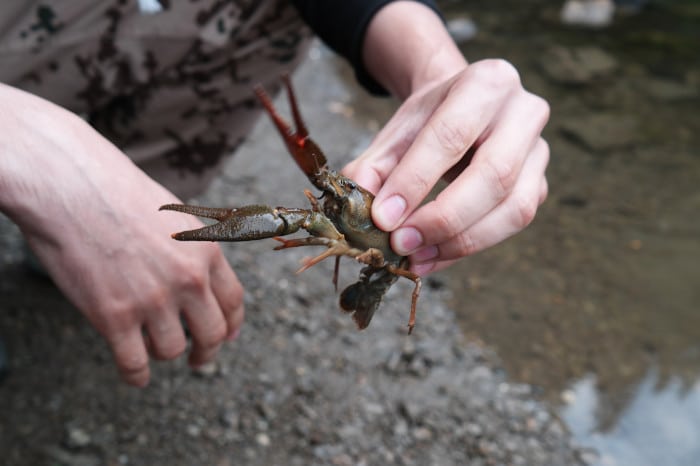
As mean and aggressive as crayfish can be (also called “crawdads” where I’m from), they make great trout bait. Basically all predatory fish eat crayfish, and you’d probably be surprised to see just how many of these things end up in a trout’s stomach.
Crayfish are another bait where regulations vary, though. In my state (Idaho), they’re legal if caught directly from the body of water you’re fishing. In other places, you can fish with them anywhere, and in some states, they’re completely illegal.
Where you can fish them, bottom bouncing works best. Hook it through the end of the tail with a size 6 or 8 octopus hook and slowly drift it downriver. When fishing for trout, small crayfish only a couple of inches long work best.
Crayfish also work great when fished on a jig head. That’s because real crayfish move in short, quick movements before settling down to the bottom again. You can mimic these movements with a jig head in fast runs or even lakes to catch trout.
Honorable Mention: Berkley Powerbait
This list wouldn’t be complete without a mention of good ol’ Berkley Powerbait. Though it isn’t the bait I would use for wild trout, it’s so good at catching stocked trout that it had to make the list.
The reason it’s great is that it perfectly mimics the feed that stocked trout are raised on, and comes in some eye-catching colors too. For rainbow trout raised on fish pellets, Berkley Powerbait is as good as anything else on this list. Pink and Chartreuse are my go-to colors.
All that said, any of the baits listed above are better for wild rainbow trout.
Final Thoughts
If you use any of the baits listed above, you’ll have a solid chance at catching trout on your next outing. I’ve successfully caught trout with everything I’ve mentioned on this list, and any one of these baits could net you your next personal best. Good luck and tight lines!

